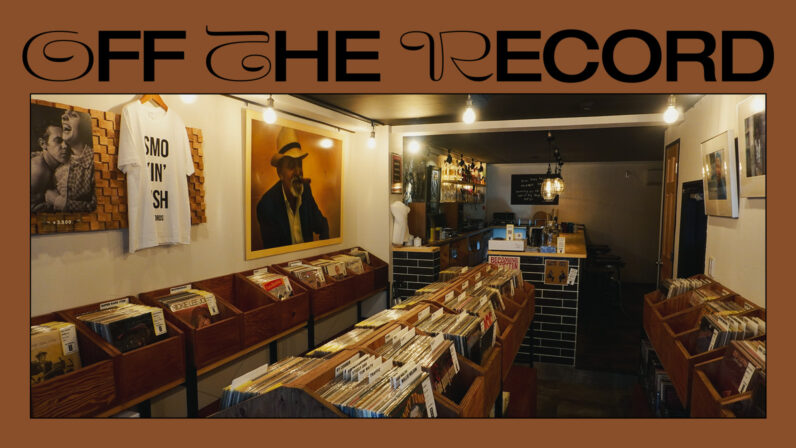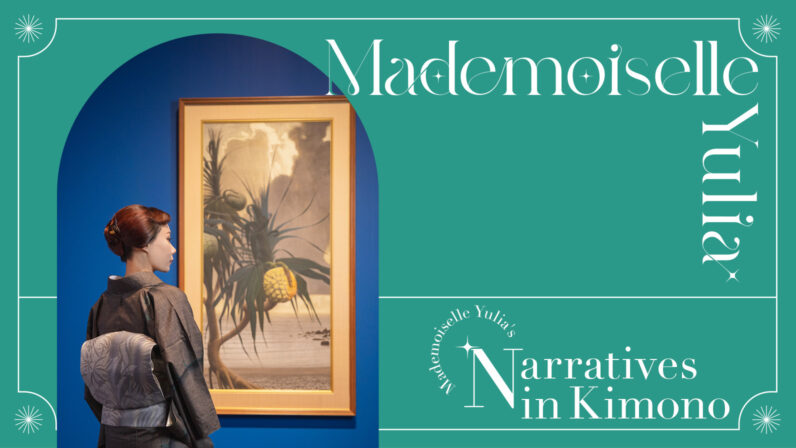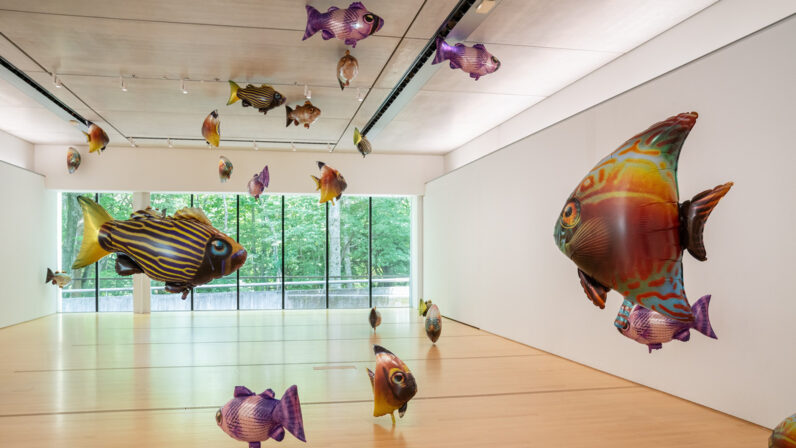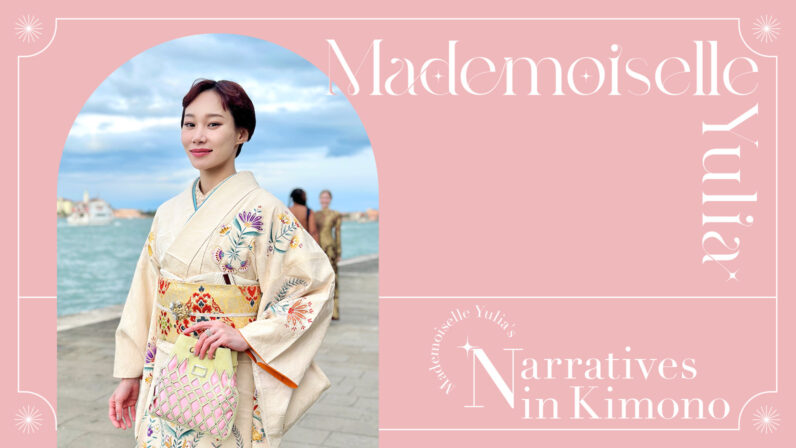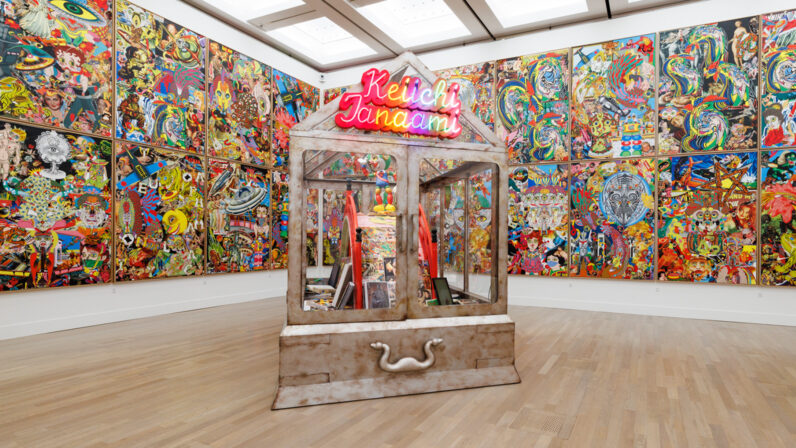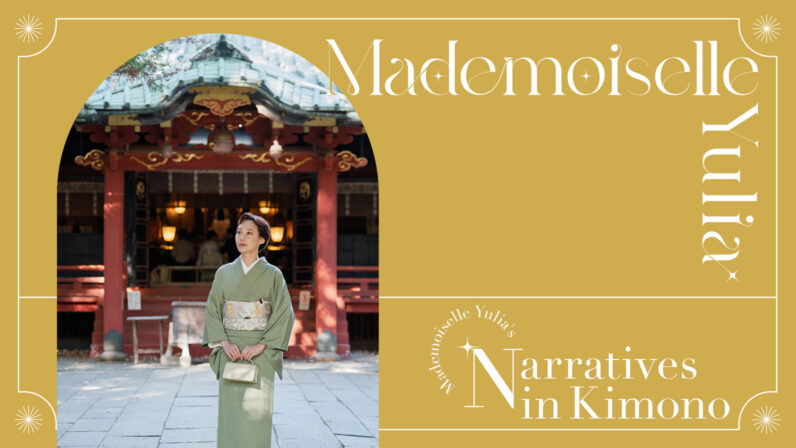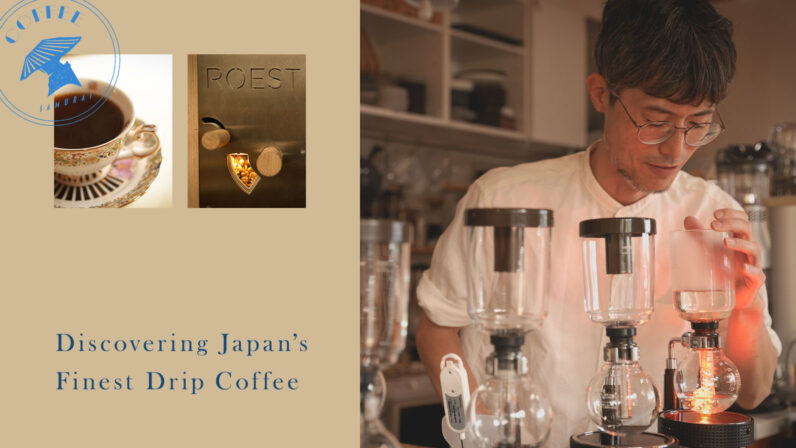‘Wild Wonders: The Animal Kingdom in the Imperial Collections’ is currently being held at the Imperial Palace’s Sannomaru Shozokan. This exhibition features works of art passed down through the Imperial Family, exploring diverse portrayals of wildlife in an eclectic range of genres. The exhibition runs until Sunday, September 1, 2024.
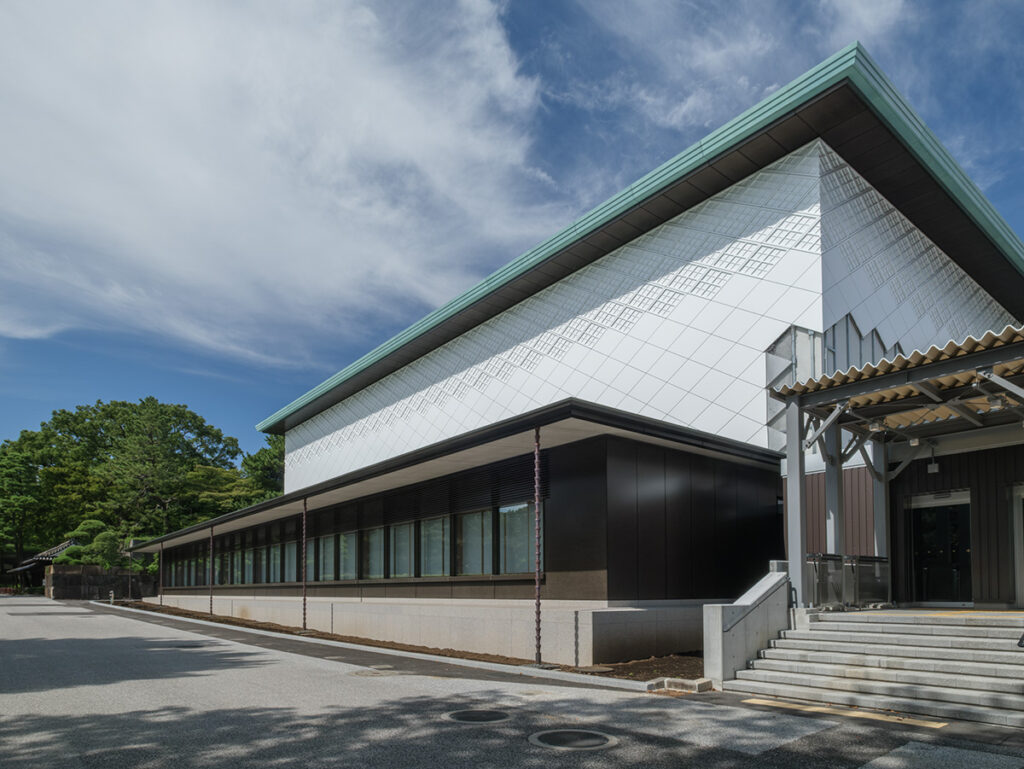
Exterior view of the Sannomaru Shozokan at the Imperial Palace
The exhibition is divided into three sections: ‘Calligraphy and Painting,’ ‘Sculpture and Decorative Arts,’ and ‘International Artwork.’ The following highlights some of the most impressive works of the exhibition. Please note that the displayed works may change between the first and second halves of the exhibition, so visitors are advised to check the schedule to avoid missing out.
Calligraphy and Painting
Since ancient times, Japanese culture has been shaped by influences from around the continent. Poetry and literature using Chinese characters and kana script, as well as paintings based on performing arts, often feature wildlife familiar to Japanese people. In the first exhibition room, poems and waka poems dedicated to insects and birds, along with calligraphy, paintings, and scrolls, are on display.
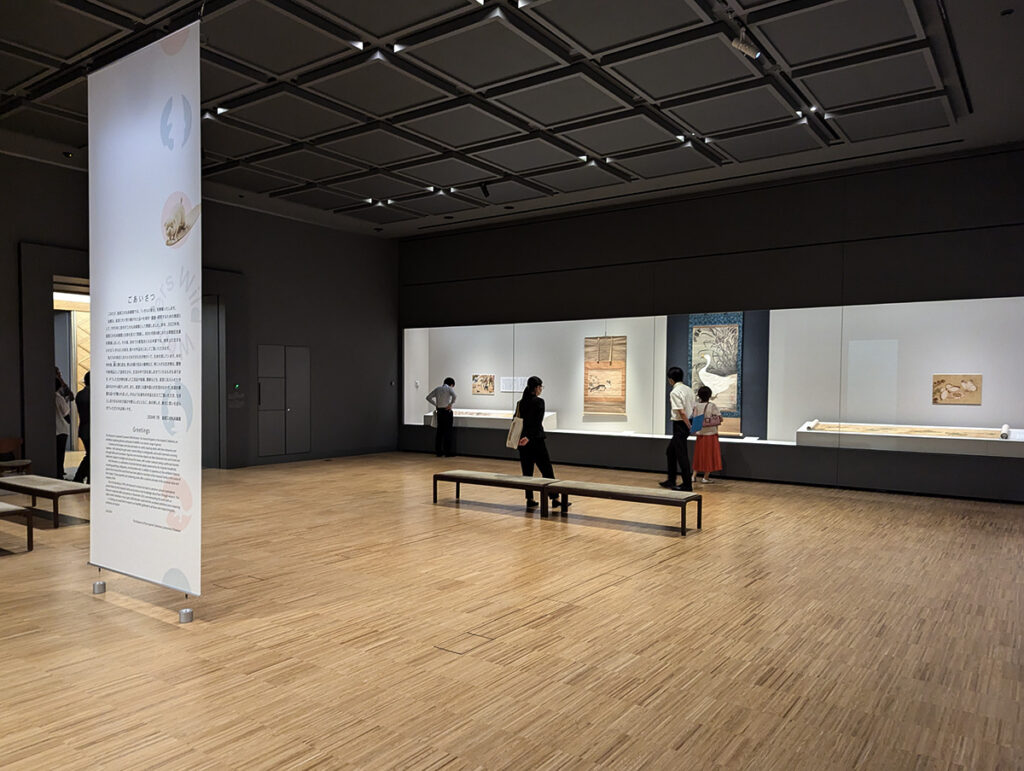
■Colorful Realm of Living Beings “Goose and Reeds”
In the center of the exhibition room, there was a striking painting of a pure white goose. It was Ito Jakuchu’s national treasure ‘Colorful Realm of Living Beings: “Goose and Reeds.”’ Upon closer inspection, one could see that the white was not just plain; noticing the intricate details would reveal that delicate, soft shadows resembling beige highlighted the feathers.
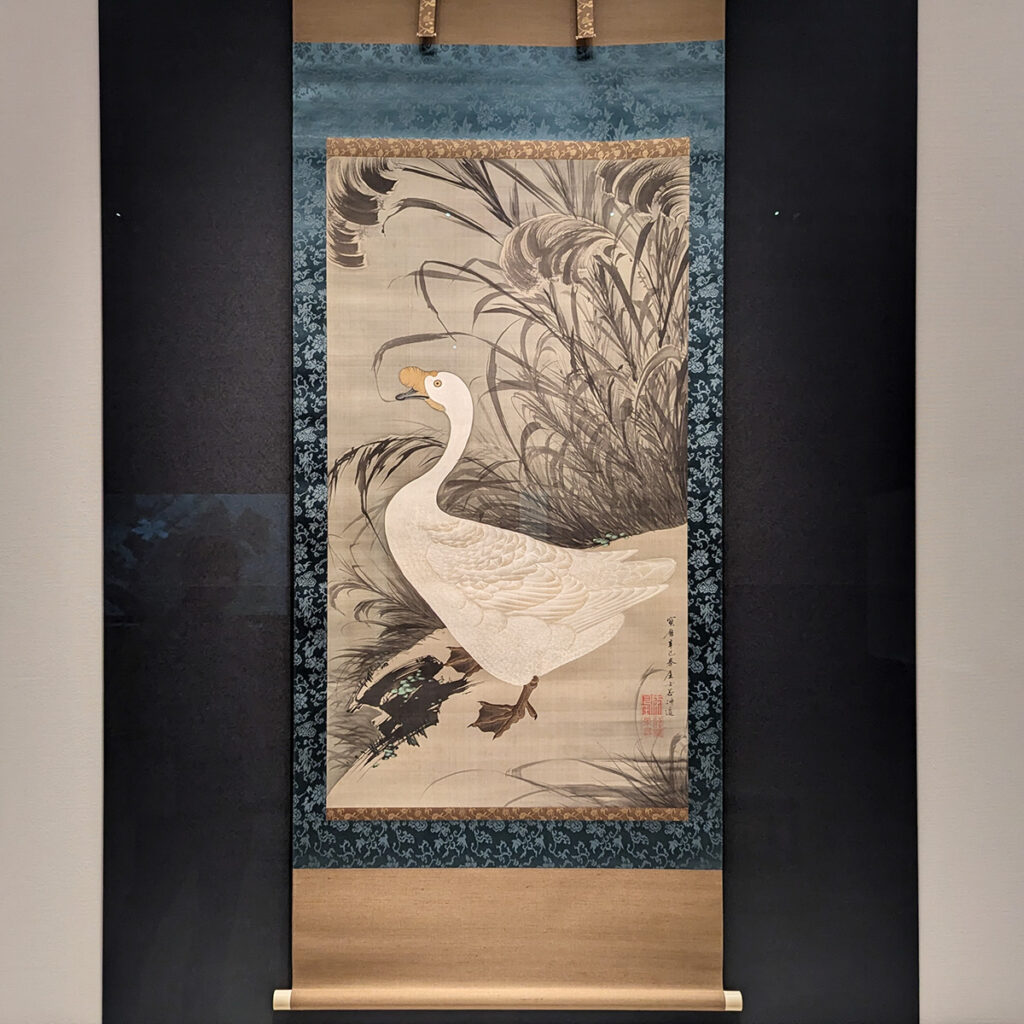

National Treasure “Colorful Realm of Living Beings “Goose and Reeds”” by Ito Jakuchu, Edo Period (1761).
Exhibition Period: 7/9 – 8/4
This painting was created using a technique known as ‘Kempon Chakushoku,’ where colors are directly applied onto silk. It takes advantage of the fabric’s translucency by applying yellow ochre on the reverse side, with ‘gofun’(pure white pigment) used on the surface to depict the feathers. Ito Jakuchu is renowned for favoring bird motifs, but he is also celebrated for his adept use of the technique known as ‘Urazaishiki’ (reverse coloring).
The background is boldly depicted with ink, while the goose in the foreground is intricately detailed, down to each individual feather, creating a striking contrast that draws attention to the prominence of the goose. It’s an impressive piece that showcases the range of Jakuchu’s artistic expression.
■”Dance of the Seven Virtues” from Collection of Writings by Bai Juyi
I was also amazed by the excellent preservation of ‘“Dance of the Seven Virtues” (from Collection of Writings by Bai Juyi, Fragment of Volume 3), believed to be from the Heian period. It’s a copy from a collection of Chinese poetry and prose by the Tang dynasty poet Bai Juyi, where butterflies, birds, and flowers are painted on silk. Not to be missed is the beauty of the dedicated lacquer box adorned with maki-e depictions of folklore birds like auspicious birds and phoenixes.
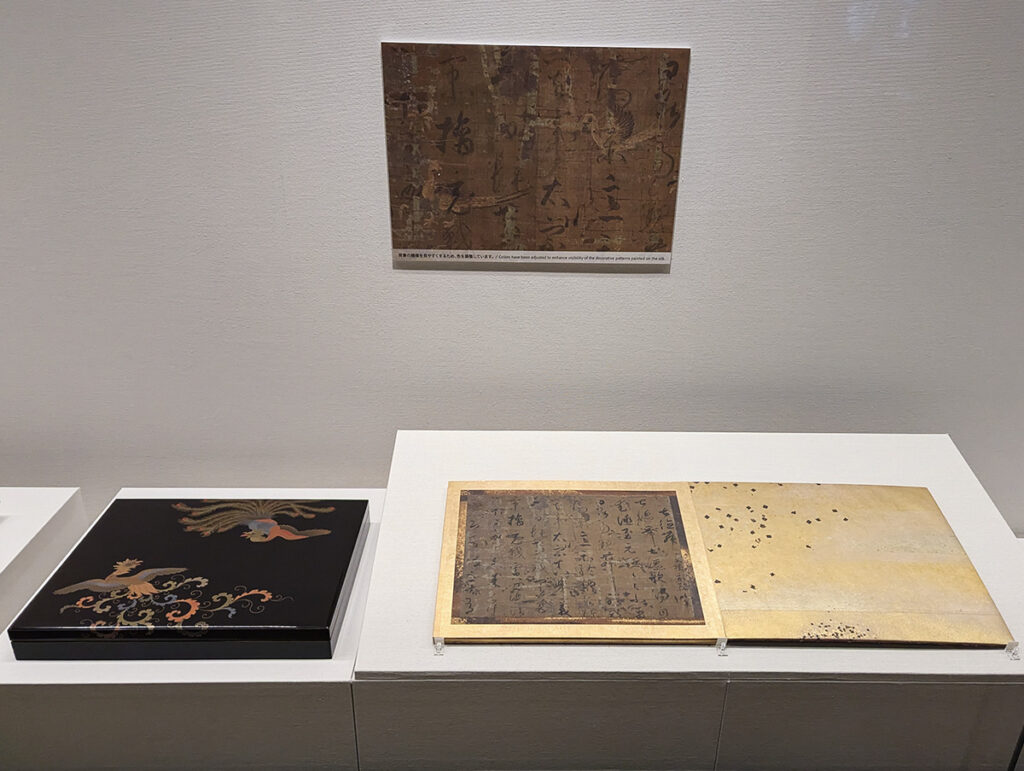
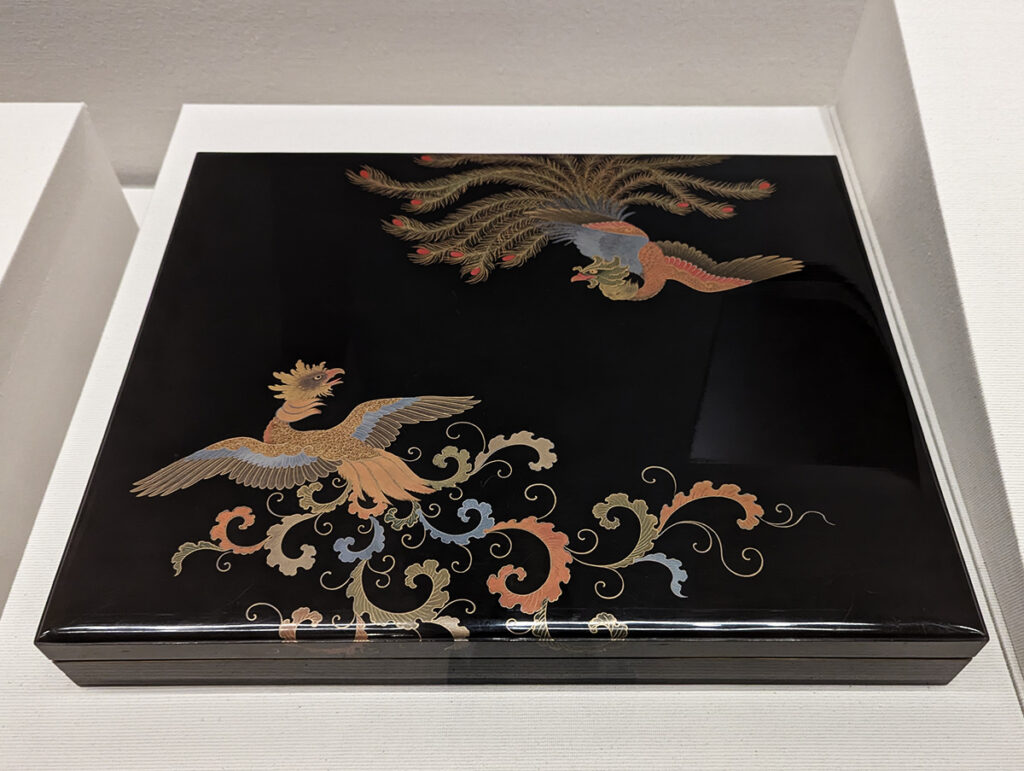
“Dance of the Seven Virtues” from Collection of Writings by Bai Juyi, attributed to Minamoto no Toshifusa, Heian period (12th century)
Mr. Hiroyuki Shimatani, the executive director of the museum, explains, “The characters ‘七徳舞’ (Dance of the Seven Virtues) repeatedly appearing in the text are written in different styles of calligraphy. I hope that visitors can take the opportunity to appreciate the detail and charm of the diverse script.”
In addition, there are displays of writings that capture Japanese haikus singing of the Japanese cuckoo and fireflies, as well as drawings of familiar beloved creatures such as cats and dogs.
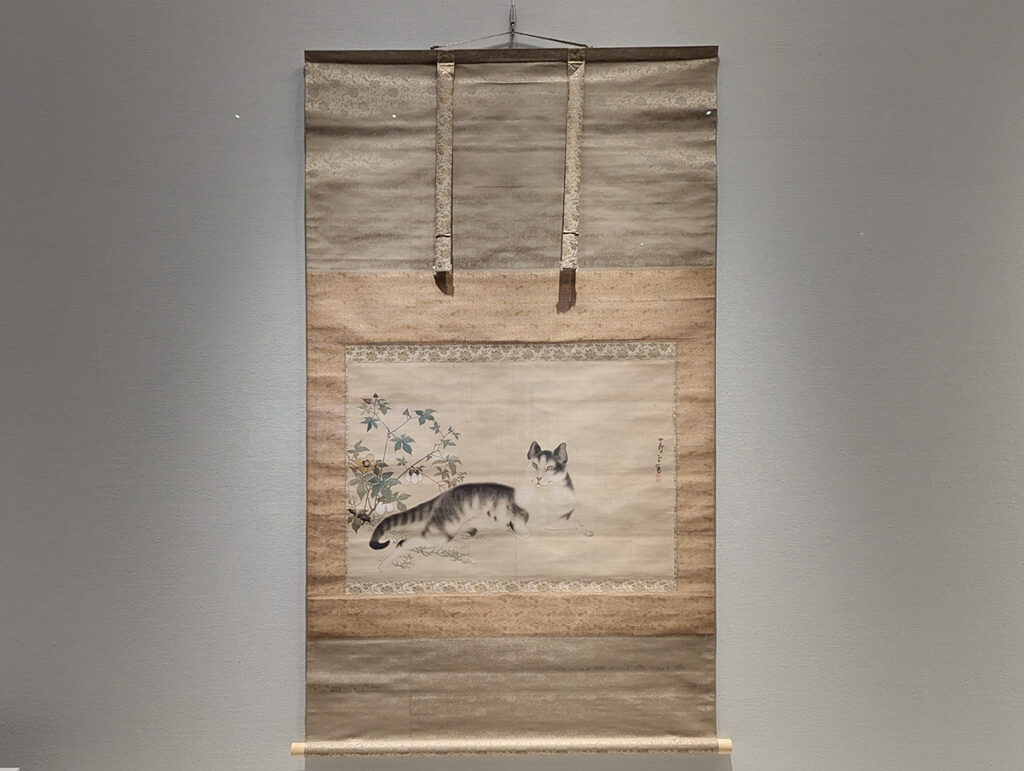
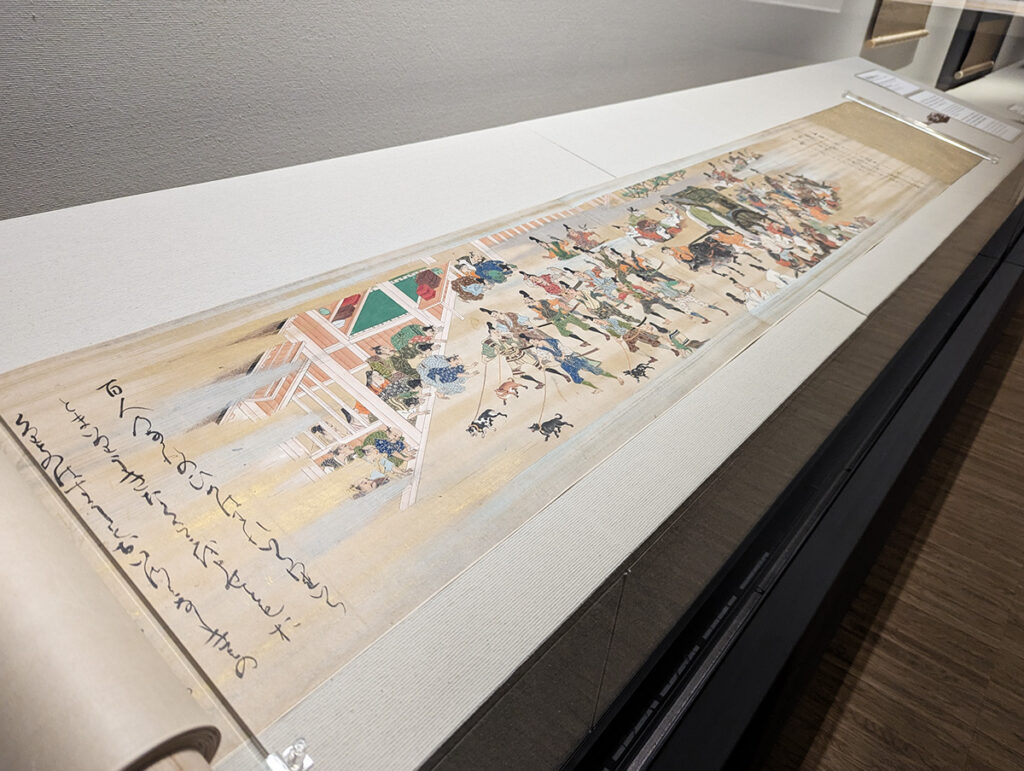
1st piece: ‘Cat and Cotton Plants’ by Nagasawa Rosetsu, Edo period (18th century). Exhibition period: 7/9 – 8/4.
2nd piece: ‘Volume 14(ii) of Illustrated Tale of Oguri Hangan,’ lower section (partial) by Iwasa Matabei, Edo period (17th century). Exhibition period: 7/9 – 8/4.
Sculpture and Decorative Arts
On the right side of the second exhibition room, curated under the theme of ‘Sculpture and Decorative Arts,’ there is an impressive collection of pieces from the Meiji to Showa periods. These modern and contemporary works feature line-ups that include hyper-realistic sculptures, truly masterpieces of superb craftsmanship.
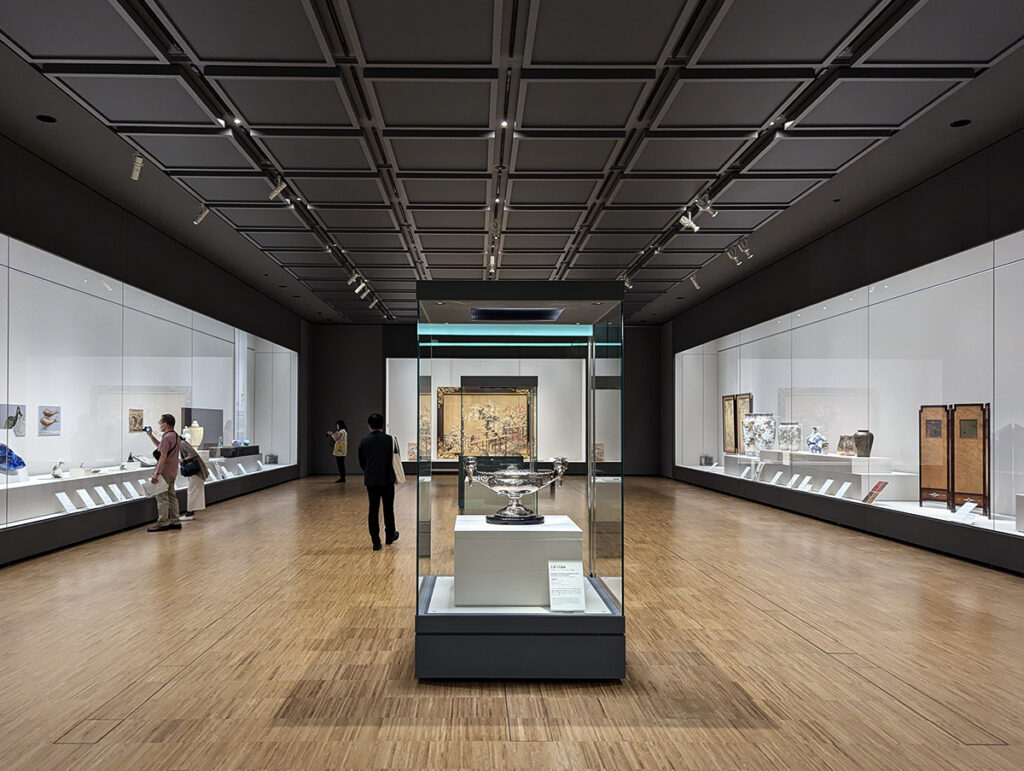
■Chrysanthemums and Doves
What really amazed me was the large embroidered artwork displayed towards the back. It beautifully captured the plump, soft feathers of the dove and the texture of the wood using the direction of the threads and subtle color variations. The glossy silk threads added a luxurious touch, while the composition and colors, reminiscent of traditional Japanese painting, imparted a distinctive elegance. These elements all together perfectly embodied the essence of ‘miyabi’, the Japanese aesthetic concept that alludes to grace or refinement.
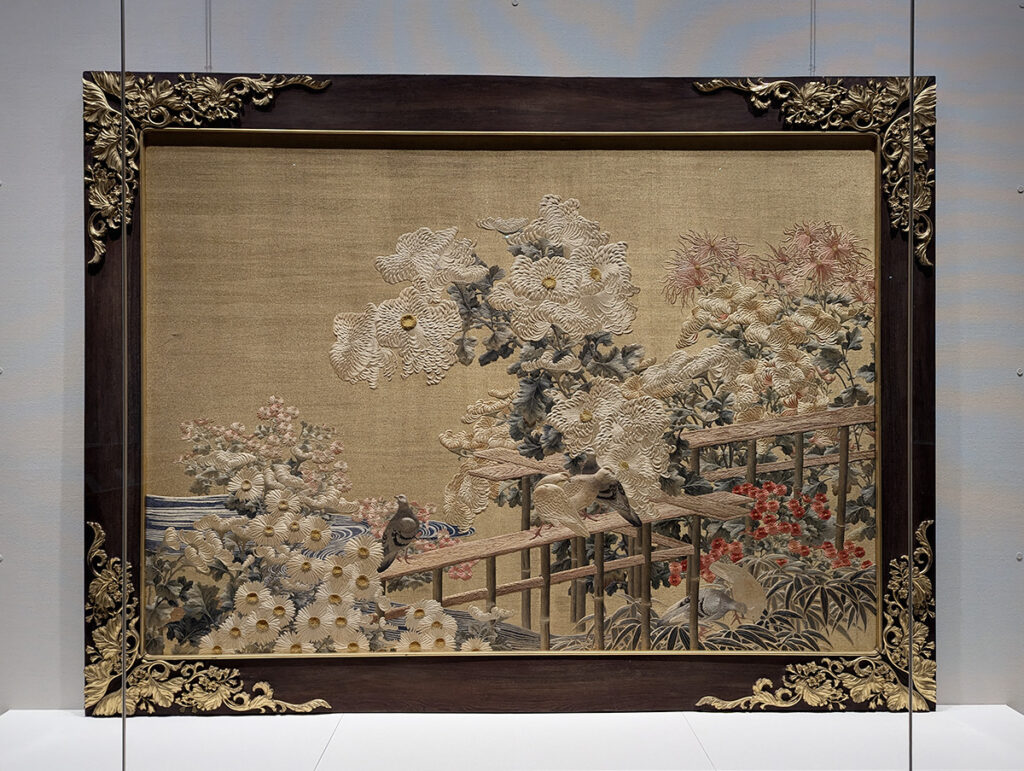
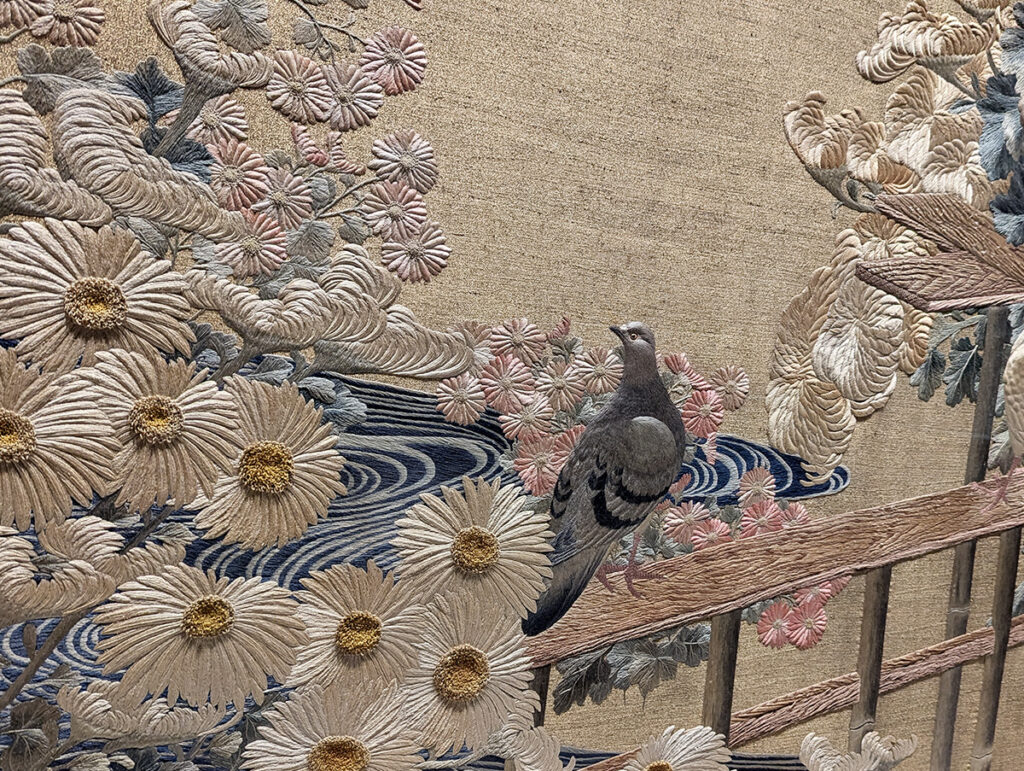
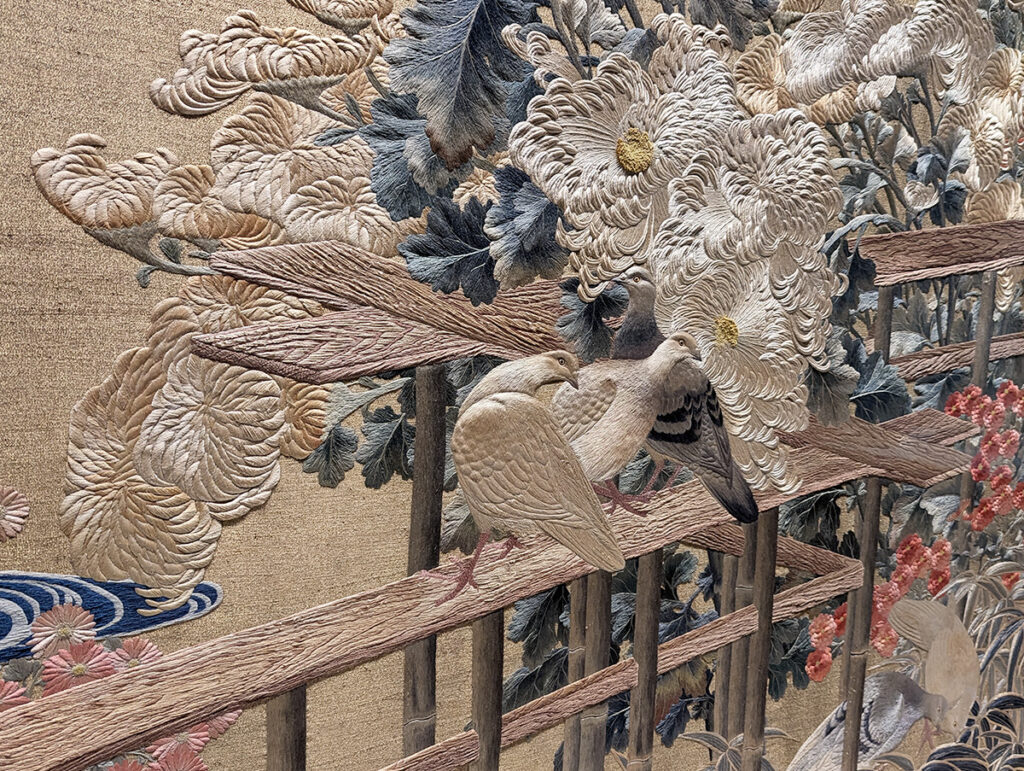
‘Chrysanthemums and Doves’ by Iida Shinshichi IV, Meiji 44 (1911). Exhibition period: 7/9 – 8/4
The grandfather of the artist known as Iida Shinshichi IV, was the founder of the long-established department store ‘Takashimaya.’ Initially starting as a second hand clothing merchant, it later transformed into a prestigious kimono retailer. During the Meiji period, it was common for painters to create designs for kimonos, and Takashimaya had a dedicated studio where these artists showcased their skills. This piece was likely produced by such painters under the supervision of the 4th generation Iida Shinshichi.
Interestingly, during that time, Iida Shinshichi IV received high acclaim when he exhibited velvet-yuzen (a traditional Japanese dyeing technique) and embroidered frames at the Paris Expo. Later, at the Japan-British Exhibition in London, Takashimaya’s exhibition space was immensely popular. Even over a century later, these works still impress, giving a glimpse of the huge impact they must have had on people at that time.
Additionally, there are other sculptures such as ‘Puppy and Feather Brush’ carved from ivory and a bronze ‘Weasel’ that depict the fluffy fur with such realism that it’s hard to believe they are made from such rigid materials. While marveling at their exceptional craftsmanship, it’s also easy to feel a shared admiration for the charm that makes these animals so endearing.


1st piece: ‘Puppy and Feather Brush,’ by Iida Shinshichi IV, Late Meiji to Taisho era (20th century).
2nd piece: ‘Weasel,’ Iida Shinshichi IV, Meiji era (19th century).
International Artwork
On the opposite side of the same exhibition room, there are displays of items acquired from different countries. These include traditional crafts exchanged through diplomatic relations with the imperial family and artworks by renowned artists representing those nations. It’s an opportunity to experience each country’s unique color palettes and aesthetic sensibilities while enjoying the cultural differences in how familiar creatures are perceived across the world.
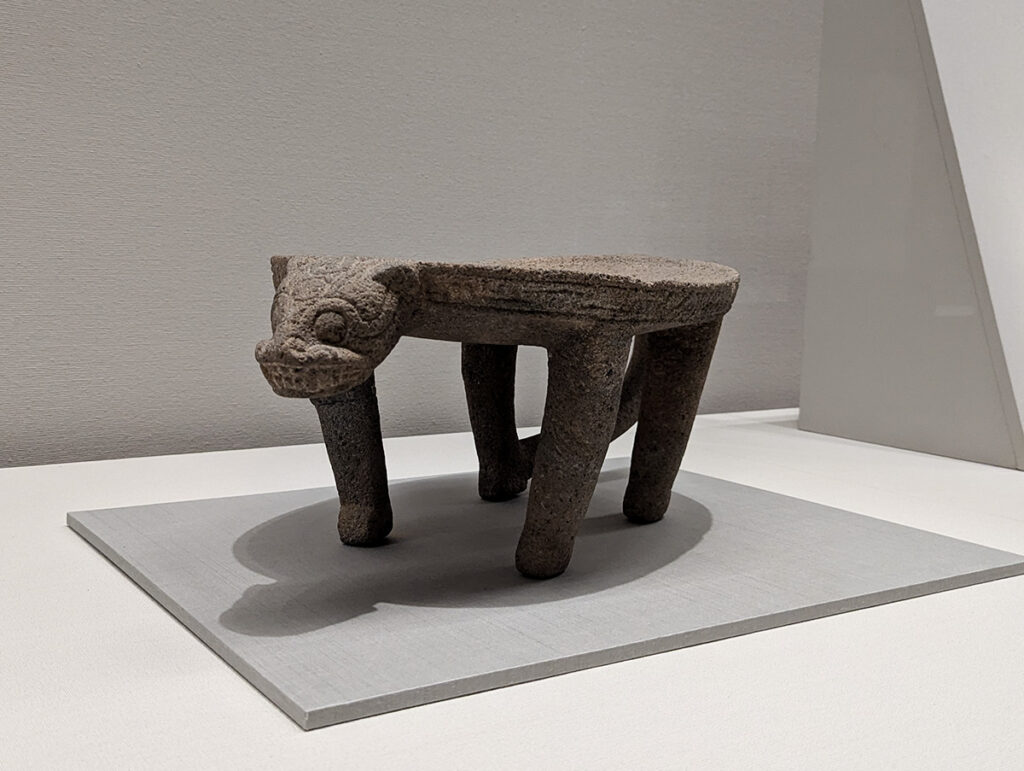
‘Jaguar-shaped Metate,’ 7th to 9th century, from Panama.
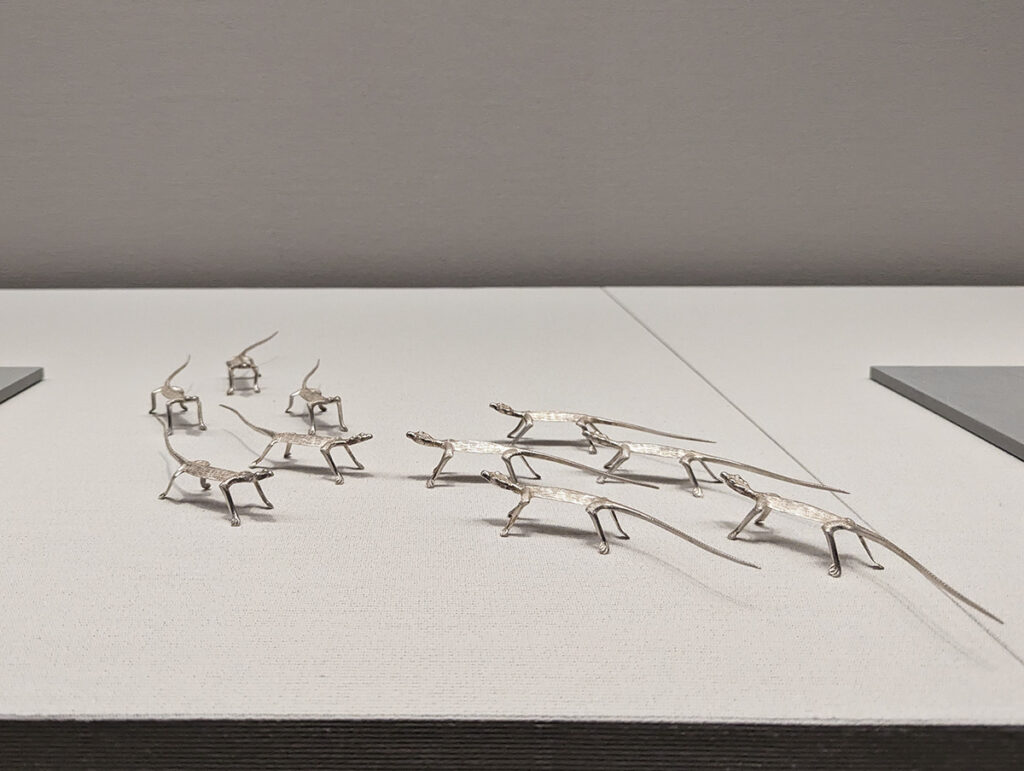
‘Lizard-shaped Cutlery Rests,’ circa 1963, from the Republic of Dahomey.
“At the Sannomaru Shozokan, we have been planning exhibitions from various perspectives to showcase the imperial collections to everyone. This time, considering it’s summer vacation, we have themed the exhibition around wildlife and living creatures, making it an enjoyable experience for children and their families.” (Director, Mr. Hiroyuki Shimatani)
The venue also provides worksheets for children to answer quizzes while searching for hidden creatures within the artworks, fostering cultural education in a fun way. Moreover, taking a stroll through the East Gardens after viewing the exhibition gives visitors a chance to feel firsthand how history seamlessly blends with the present day.
Wild Wonders Exhibition
■ Exhibition Overview
Venue: Sannomaru Shozokan, Imperial Palace
Dates: July 9 - September 1, 2024
First Period: July 9 - August 4, 2024
Second Period: August 6 - September 1, 2024
Opening Hours: 9:30 AM - 5:00 PM (Last entry at 4:30 PM); Night openings until 8:00 PM on Fridays and Saturdays (*Except July 26 and August 30 )
Closed on Mondays (Open on July 15 and August 12, closed the following weekday)
*The museum may be temporarily closed due to unforeseen circumstances.
Website: https://pr-shozokan.nich.go.jp/2024wildwonders/](https://pr-shozokan.nich.go.jp/2024wildwonders/
■ Related Events
① Exhibition Room Art Explanation
Date and Time: Every Friday at 18:35 (approx. 20 minutes)
*Except July 26 and August 30
No registration required, free of charge (requires admission ticket)
② Special Viewing Event
Dates: July 26 - August 30, 2024
Time: 18:00 - 20:00 (Explanation by researcher from 18:00 to 19:00, followed by free viewing)
Capacity: 20 participants (ages 18 and above)
Admission Fee: 5,000 yen (tax included), includes exhibition catalog ("Wild Wonders")
Schedule for the Day:
17:45 Reception starts at the Otemon Gate
18:00 Special viewing event with explanation by researcher
19:00 Free viewing (last entry; no entry after 19:00)
20:00 Final closure
Event Registration
https://www.e-tix.jp/shozokan/


